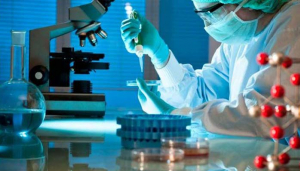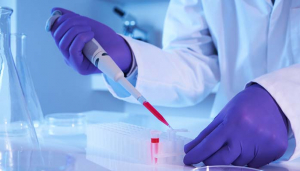Free knowledge to monitor the world of events. Have a look at our must read Blogs on Pharma, Finance, HR, Health and Cross Industry.
The Impact of Cell Bank Establishment
2022-08-03
For products made from cells, cell bank characterization is a crucial quality-control procedure. A well-established cell bank is essential to guarantee there is an appropriate supply of similar cells for use for the course of the product's complete life span once a cell line is selected as its biological source.
Additionally, the goal of cell bank characterization is to certify the legitimacy of the cell substrate for use in manufacturing, as well as its identification and purity. The testing protocol differs depending on the biological characteristics of the cells, their history of cultivation, and the testing methods that are accessible. Additionally, due to requirements, the test items for the master cell bank and functioning cell bank are different.
Cell Bank Production
Monoclonal antibodies, recombinant proteins, and other biologicals are made in cultured cell lines derived from humans, lower animals, insects, and microorganisms. Usually, a technique that includes the following steps is used to manufacture these therapeutically active cells:
- Transfection or modification of genes
- Evaluating expression
- Growth and characterization of cells
These cells must undergo several passages in culture, which raises the risk of genetic modification, contamination, or loss of expression structures as the cells divide. Therefore, it is essential that cells are passaged as infrequently as possible for best drug production and that the original high producing clone is not lost or changed.
From the original cell line that produced therapeutics, a Master Cell Bank (MCB) was created. In order to avoid genetic diversity and potential contamination, it is cryopreserved in several vials.
From the original cell line that produced therapeutics, a Master Cell Bank (MCB) was created. It is cryopreserved in several vials to reduce the number of times a cell line is handled or passed through during the manufacturing process, preventing genetic variation and potential contamination.
These cell banks must be thoroughly described and screened for contaminants including bacteria, fungus, and mycoplasmas before regulatory submission. These services, together with cell line characterization and genetic stability, are provided by Bio Reliance.

Characterization of Cell Lines
Regulatory bodies require cell line characterization to characterize and test cell line identity, genetic stability, and purity as well as to establish the origin and history of the cell line species.
Identity - This necessary test verifies the species of origin, and it must be carried out on a Master Cell Bank (MCB) and End-of-Production/Cells at Limit (EOP/CAL) using one of the procedures listed below.
A cell line's genetic stability is evaluated throughout the production process; typically, cells from the MCB are used to compare cells from the EOP/CAL.
Purity: Using this test, a variety of potential contaminants, including as bacteria, fungus, mycoplasma, and viruses, can be found.
Cell bank biosafety testing: Risk assessment and regulatory expectations
A comprehensive testing method must be developed and put into place based on a thorough, precise risk assessment in order to guarantee the purity and security of the cell bank. The sort of cell bank that has been created must be taken into account as part of this assessment because different cell banks have different testing justifications. For instance, the testing program used for a production cell bank is often substantially longer than the testing program used for a non-production cell bank (cells used for analytical tests) or for seed cells that are expanded to generate an MCB.

Cell bank Establishment: Testing for identification and genetic stability
Testing for genetic stability is a crucial part of characterizing a production cell bank and is necessary according to regulations. The expression vector is stable transfected into the host cell line to produce common mammalian production cell lines. Following cell culture, genomic events like deletion, rearrangement, and point mutation may take place and affect the gene expression profile and/or phenotype of the cells. The instability of the cell line raises serious concerns since it could compromise the quality of the final output, endangering the safety of the patients. Even if product integrity is not compromised, operational concerns include potential productivity loss and increased risk of future occurrences.
Conclusions
Creating a two stage cell bank has a number of significant advantages than doing so in a single stage cell bank, including:
- It can cut down the amount of storage space needed by at least 80%.
- It lowers the quantity of cells required to produce a stock of working and master cells.
- It offers additional adaptability. The size of the subsequent working stock can be increased in line with the growth in demand for a particular cell line.
Do you want to understand more about Cell Bank Establishments? We can create the entire content as per your needs. Request more details from us!
By Rajeethan Thaventhiran, SEO & IT Executive, GLC Europe, Colombo Office, Sri Lanka.
Get a feel for our events

Process Validation for Biotechnological Products MasterClass - US edition
06-09 May, 2024
Understand how to qualify scale-down models
learn more >>
Fundamentals of Pharmacokinetics MasterClass - EU edition
07-10 May, 2024
Pharmacokinetics (PK) play a key role in drug development
learn more >>
Advanced Stability Testing in Pharmaceuticals MasterClass - US edition
07-10 May, 2024
Increase the likelihood of studies receiving regulatory approval
learn more >>













